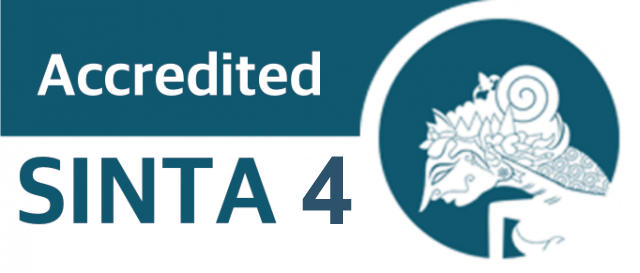TANFĪDZ TA’ĀLUM AL LUGHAH AL ‘ARABIYYAH BI AL TARIQAH AL MAWADLI’IYYAH AL MUTAKĀMILAH AL QĀIMAH ‘ALA ALMARKAZ LĪ MARHALAH AT-THUFŪLAH FĪ MADRASAH AL DINIYYAH
Abstract
God revealed the Qur’an to our master Muhammad. May God’s prayers and peace be upon him, in Arabic as Muslims who are guided by the Qur’an and the Sunnah, both of which use the Arabic language. Every child is not only born to be intelligent according to nature but will also be equipped with creativity, both genetically and through training and education. On the other hand, nature, environment, and family provide each child the freedom to explore and experiment to the stage where children can find and understand whatever is required It is required in life. This research is a type of field research that uses a qualitative descriptive approach. The researcher uses data collection techniques made by triangulation (combined), inductive data analysis, and qualitative research results to emphasize meaning rather than generalization. Objects in qualitative research are natural things, so this research method is often referred to as the natural method. The impact of center-based integrative thematic learning on the development of creative attitudes for early childhood in this school is evident from the creativity that appears in the different play activities in each center. Besides the teacher, of course, the role of parents and the family is also important to create a comfortable and safe learning environment, always trying to understand the child's personality, knowing what the child wants.
Keywords: Arabic language, children, integrative the
Full Text:
PDFReferences
Arikunto, Suharsimi, Prosedur Penelitian Suatu Pendekatan Praktik, Jakarta: Rineka Cipta, 2006.
Al-Ghozali, Ihya ‘Ulumuddin, Circa: Beragam, 1100.
Arsyad. Azhar. 2003. Bahasa Arab dan Metode Pengajarannya. Surabaya: Pustaka Pelajar.
Bahri Djamarah. Zain Syaiful dan Aswan. 2001. Strategi Belajar Mengajar. Jakarta: Rineka Cipta.
Bungin. Burhan (Ed). 2006. Metodologi Penelitian Kualitatif. Jakarta: RajaGrafindo Persada.
Effendy, Ahmad Fauzi Metode Pengajaran Bahasa Arab, Malang: Misykat,2003.
Fidesrinur, dkk, Pedoman Penanaman Sikap Anak Usia Dini, Jakarta: Direktorat Pembianaan PAUD, 2015.
Jamaluddin. 2003. Problematika Pembelajaran Bahasa dan Sastra. Yogyakarta: Adi Cita.
Latif, Muchtar, dkk, Orientasi Pendidikan Anak Usia Dini, Teori dan Aplikasi, Jakarta: Kencana Prenada Media Group, 2013.
Mirroh Fikriyati, Perkembangan Anak Usia Emas (Golden Age), Yogyakarta: Laras Media Prima, 2013.
Rachmawati, Yeni, dan Euis Kurniati, Strategi Pengembangan Kreativitas Pada Anak Usia Taman Kanak-kanak, Jakarta: Kencana, 2010.
Setiawan, Bukik, Anak Bukan Kertas Kosong, Panduan Eksplorasi, belajar, berkarya di zaman kreatif, Jakarta: PandaMedia, 2015.
Tabrani, Primadi, Proses Kreasi-Gambar Anak-Proses Belajar, Jakarta: Erlangga, 2014.
Suyadi, Teori Pembelajaran Anak Usia Dini dalam Kajian Neurosains. Bandung: PT. Remaja Rosdkarya, 2014.
DOI: http://dx.doi.org/10.35931/am.v4i2.596
Refbacks
- There are currently no refbacks.
Copyright (c) 2021 Al Mi'yar: Jurnal Ilmiah Pembelajaran Bahasa Arab dan Kebahasaaraban

This work is licensed under a Creative Commons Attribution-ShareAlike 4.0 International License.
Al Mi'yar: Jurnal Ilmiah Pembelajaran Bahasa Arab dan Kebahasaaraban
Index by:
![]()
![]()
![]()
![]()
![]()
![]()
![]()
![]()
![]()
![]()

Publish by:
Program Studi Pendidikan Bahasa ArabSekolah Tinggi Ilmu Al-Qur'an AmuntaiContact us:
Address: Jl. Rakha Pakapuran, Amuntai Utara
Kabupaten : Hulu Sungai Utara
Kode Pos : 71471
Provinsi : Kalimantan Selatan
Email: jurnal.almiyar@gmail.com

Ciptaan disebarluaskan di bawah Lisensi Creative Commons Atribusi-BerbagiSerupa 4.0 Internasional.
___________________________________________________________________________________________________________________________________________________________________
Ciptaan disebarluaskan di bawah Lisensi Creative Commons Atribusi-BerbagiSerupa 4.0 Internasional.

 slot88
slot88








